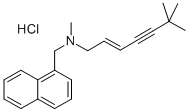Breeding characteristics temperate, easy feed, hi in the middle and lower aquarium groups swim constantly, can be mixed with other fish breeds. Breeding water temperature 22 to 24 degrees Celsius, slightly acidic soft water, water requirements clear and transparent. The bait is mainly small live food. He likes to live in a dimly lit aquarium and it is forbidden to shine under strong light. Daily water quality is dominated by old water, and it is not advisable to add new water; otherwise, it is susceptible to white spot disease.
Breeding characteristics Broodstock sexual maturity is 10 months. Male and female differences are more difficult. Male fish are generally more slender; female fish are more hypertrophic. In the bottom of a fish tank of 30 cm X 25 cm X 25 cm covered with hair silk grass. Water gentle 5 to 26 degrees, water pH 5.6 to 6.5, the regulator section should be carried out slowly, so that the broodstock has a process of adaptation (or use of soft double distilled water, adjust the pH, oxygen reserve). A pair of broodstock was placed in the evening, and the females usually hatched the larvae at dawn the next day. After 4 to 5 days, the larvae swam and ate. Females produce 200 to 300 tablets each time. The propagation of traffic lights is more difficult, mainly because of the higher requirements for breeding water quality and the special care requirements for larvae. Propagation water needs to use very soft distilled water, and then use sodium dihydrogen phosphate to adjust the pH of the water to 5.6-6.5, and inflate it with a larger air pump for 2 to 3 days, and pour it into a large-mouth glass bottle for use. A layer of nylon mesh (the size of the mesh should not allow the brood to pass through) is laid on the bottom of a large-mouthed glass bottle (90 mm in diameter, 180 mm in height, and 130 mm in depth), and a little hair shrub is laid on the mesh plate and put into each bottle. A pair of broodstock. In order to increase production, 50 to 100 glass bottles are usually required in the hatchery.
In the evening, put a pair of brood fish into the glass bottle, and the paper is covered with paper to create a dimly lit environment. The eggs are usually laid on the second day and observed at about 10 o'clock in the morning. All broodstock that produce good eggs should be fished out immediately. Broodstock that have not laid eggs can remain in the bottle. If the broodstock is still not spawning on the third or fourth day, it should be removed. During the spawning, the broodstock must be stopped to avoid deterioration of the water quality. Bottles that have already laid eggs should be concentrated in one corner. At 9 to 10 o'clock in the evening, an artificial egg-raising task is performed. The unfertilized white eggs inside the bottle are all sucked out with a straw, and the fertilized eggs are concentrated in 30 cm X 25 cm X 25 cm. The fish tank is hatched, and the water used for the hatching tank is to concentrate the water in the inner upper layer of the spawning bottle. Since the propagation water of the traffic light is highly acidic soft water, the old water must be used as the hatching water, and the new water is not available. replace. 400 to 500 eggs are concentrated in each aquarium and larvae are hatched after 48 hours. The temperature of the water is always maintained at 25 degrees. Paste around the cylinder is best used to paste the paper in order to prevent the light from being too strong and cause larval deformity.
Due to the small larvae and the small amount of swimming, the food can be eaten by the mouth. After opening the bait, after the yolk gray water is sifted with a 200-mesh gauze, feed it dropwise with a straw, wait for a period of time, and when the larvae swim normally, feed the 150-mesh gauze mesh with the filtered egg yolk gray water. . Due to the slow growth of larvae, the consumption of egg yolk gray water takes longer than other small breeds. In addition, the water quality of larvae hatching is extremely soft, and the water temperature is completely different from the daily feeding water temperature. When the larvae grow to 5 mm, the water in the 50 cm X 40 cm X 40 cm aquarium has the same water temperature as the daily water. The larvae and the water are pooled together in the aquarium to slowly adapt the larvae to the daily water quality. At this time, larvae can be fed with small fish worms, which can dissolve 1-2 oxytetracycline in water to prevent bacterial infection. When the larvae have red-green color, they are transferred to a length of 80 cm or a length of 100 cm. The big aquarium feeds until it grows into an adult fish.
An antifungal medication, also known as an antimycotic medication, is a pharmaceutical fungicide or fungistatic used to treat and prevent mycosis such as athlete's foot, ringworm, candidiasis (thrush), serious systemic infections such as cryptococcal meningitis, and others.
Antifungal pharmaceuticals include Terbinafine HCL, here is the structure:

An antibiotic (from ancient Greek αντιβιοτικά, antibiotiká), also called an antibacterial, is a type of antimicrobial drug used in the treatment and prevention of bacterial infections.
Sometimes the term antibiotic (which means "opposing life") is used to refer to any substance used against microbes.
Antifungal/Antibiotic/Antimicrobial
Nifuratel Drug Raw Material,Falvin Antifungal Agent,Dexamethasone Prednisone Cream,Voriconazole Powder 99%
Jinan Jianfeng Chemical Co., Ltd. , http://www.pharmachemm.com